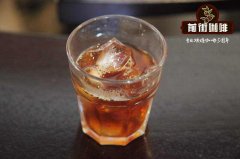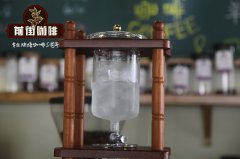Ecuador Galapagos Sea Turtle Islands introduction Ecuador Coffee introduction

Professional coffee knowledge exchange more coffee bean information please follow the coffee workshop (Wechat official account cafe_style)
About 1000Km off the west coast of Ecuador in South America, the archipelago directly below the Pacific equator is Ecuador's Galapagos archipelago. The coffee produced here is rare and seldom circulated among ordinary consumers. The archipelago is recognized as a nature conservation area by the United Nations Educational, Scientific and Cultural Organization (USECO). The relevant law expressly stipulates that no chemicals or fertilizers can be used on the whole island, and of course, it is recognized by the OCIA of the United States as the place where organic coffee is produced. The coffee-growing area is concentrated on an island called San Cristobal, with a height of about 800m Mel 1200 m. Due to the island climate, the planting area is covered with thick clouds all the year round and has a variety of plants. Galapagos coffee, which is regarded as a treasure by coffee players all over the world, is grown in this primitive and natural super-perfect ecology. According to the relevant literature, French agronomist Don Manual Gobo brought Borubon seeds here in 1875 to open the coffee history of the Galapagos Islands. For a long time, these coffee trees were idle in the forest and allowed them to grow. It was not until 1990 that the Gonzalez-Duche family took over the reorganization. At present, the full name of the manor is "Hacienda El Cafetal San Cristabal". The coffee produced by it is regulated by strict environmental laws and regulations from planting to post-processing. The annual output is about 1150 bags (each bag of 45kg), and the varieties planted are still the old bourbon varieties transplanted in the same year.
Qianjie recommended cooking parameters:
Hand punch: V60 filter cup small Fuji R440 grinding 3.5, water temperature about 90 degrees
The recommended grinding degree of normal pressure is 4 and the water temperature is 90 ℃.
The recommended siphon grinding degree is 4, and the water temperature is 90 ℃ ~ 91 ℃.
The pressure grinding degree of Philharmonic is recommended to be 3.5, and the water temperature is 90 ℃.
Important Notice :
前街咖啡 FrontStreet Coffee has moved to new addredd:
FrontStreet Coffee Address: 315,Donghua East Road,GuangZhou
Tel:020 38364473
- Prev

Introduction of Ecuadorian Coffee in Loja producing area of Loha, Ecuador
Professional coffee knowledge exchange more coffee bean information please pay attention to coffee workshop (Wechat official account cafe_style) is located in South America, Colombia and Peru between Ecuador, coffee cultivation has a long history, Loha region in southern Ecuador, close to the Andes Mountains, is one of the highest coffee-growing regions in the world, is also the country's important coffee export city
- Next

Costa Rican Verola processing Plant Father Manor COE series flavor and taste features?
Professional coffee knowledge exchange more coffee bean information please follow the coffee workshop (Wechat official account cafe_style) Costa Rica Verora processing factory Father Manor Del Padre Bendiciones COE series is a blessing in Spanish. This is the higher quality of the 2016 series from the Frailes region. Our coffee series CAFE DEL PADRE has partnered with us over
Related
- Detailed explanation of Jadeite planting Land in Panamanian Jadeite Manor introduction to the grading system of Jadeite competitive bidding, Red bid, Green bid and Rose Summer
- Story of Coffee planting in Brenka region of Costa Rica Stonehenge Manor anaerobic heavy honey treatment of flavor mouth
- What's on the barrel of Blue Mountain Coffee beans?
- Can American coffee also pull flowers? How to use hot American style to pull out a good-looking pattern?
- Can you make a cold extract with coffee beans? What is the right proportion for cold-extracted coffee formula?
- Indonesian PWN Gold Mandrine Coffee Origin Features Flavor How to Chong? Mandolin coffee is American.
- A brief introduction to the flavor characteristics of Brazilian yellow bourbon coffee beans
- What is the effect of different water quality on the flavor of cold-extracted coffee? What kind of water is best for brewing coffee?
- Why do you think of Rose Summer whenever you mention Panamanian coffee?
- Introduction to the characteristics of authentic blue mountain coffee bean producing areas? What is the CIB Coffee Authority in Jamaica?

